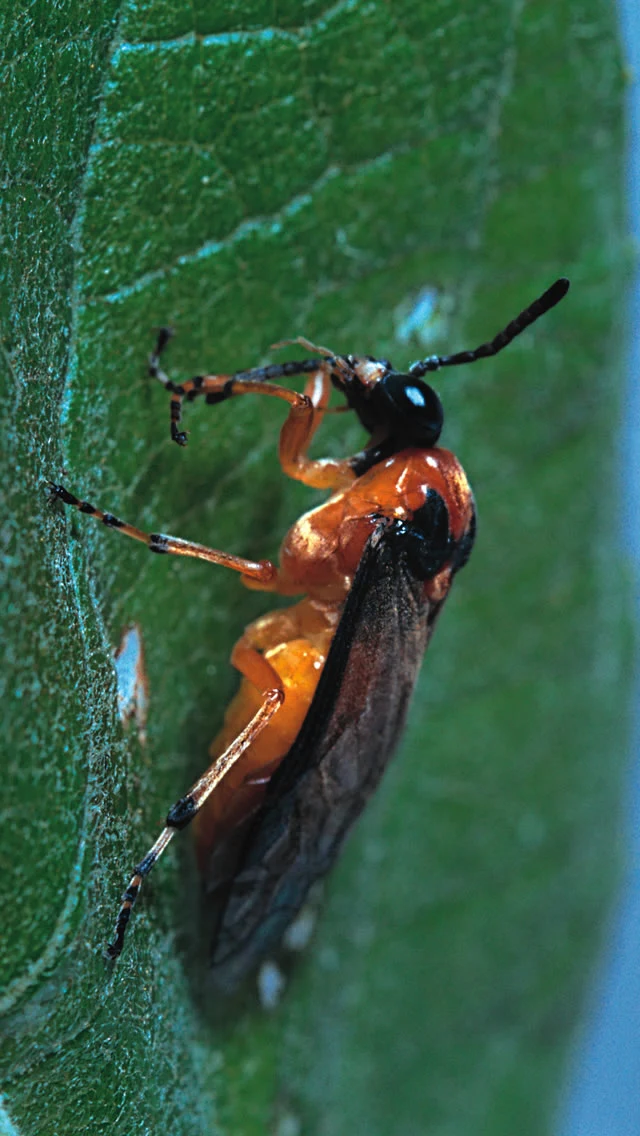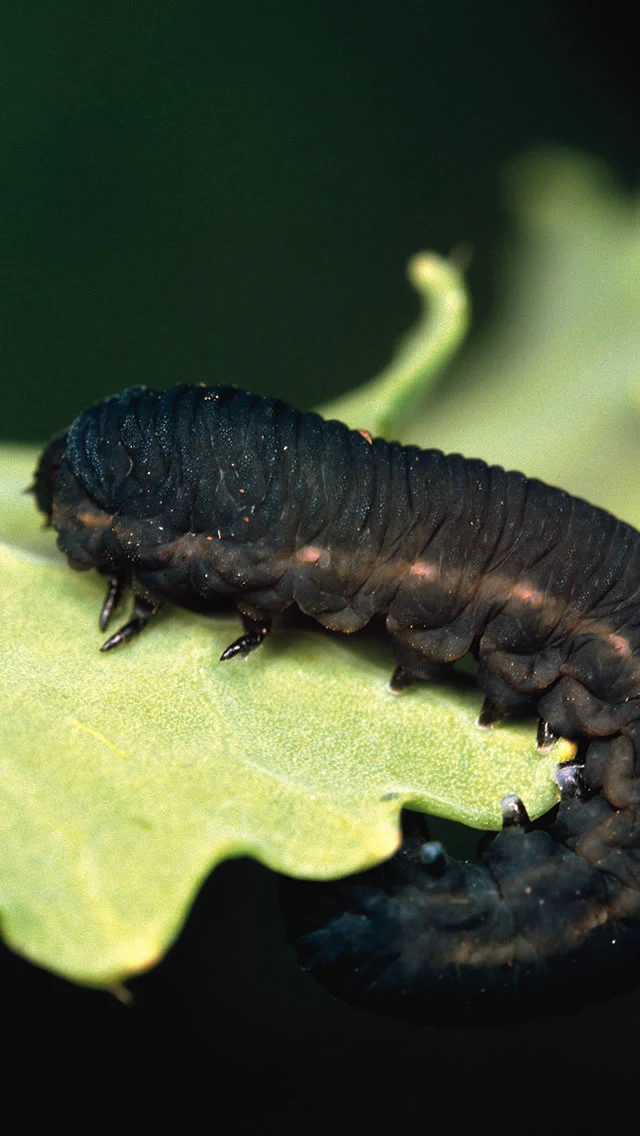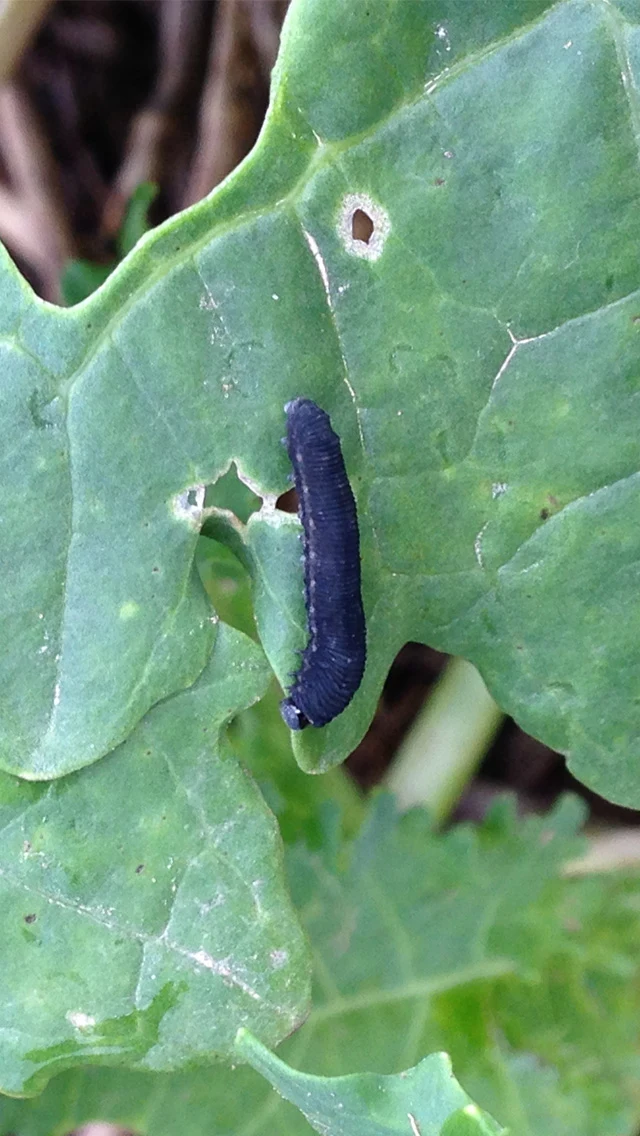
Turnip Sawfly
Athalia rosae

Athalia rosae
Identification
The adult turnip sawfly is 7-8 mm long and is yellow and black in colour. The larvae are greenish/black with a lighter coloured stripe along the side and when fully grown are up to 18 mm long.
Symptoms
Turnip sawfly larvae can be easily located and identified near damaged plants. Plants can be rapidly stripped down to bare stalks and young plants can be severely checked. Rapidly growing crops should be able to withstand a degree of feeding.
Life-cycle
The adults emerge from a pupa in early summer and in favourable warm conditions eggs are laid into the leaves of brassica plants. After a short period the larvae emerge and start feeding on the host plant. When fully fed the larvae move into cracks in the soil to pupate. There can be up to 3 generations per year.
Importance
Although rare in the UK for many years there have been reports of significant outbreaks of turnip sawfly attacks on oilseed rape in recent seasons. Stubble turnips can also be a host.
Threshold
In Germany the threshold is 1 to 2 larvae per plant.
Applications of Decis for control of other insect pests in oilseed rape will control turnip sawfly.

Turnip sawfly adult

Turnip sawfly larva showing feeding damage

Turnip sawfly larva

Turnip sawfly larvae


